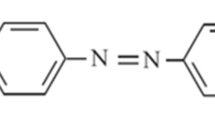Abstract
THE problem of providing an efficient black antifouling paint for use on submarines and at the wind and water line of surface ships has been the subject of investigation for some years. Cuprous oxide is considered to be the best antifouling pigment for performance and economy, but it has a strong red colour. Films of paints containing it frequently turn green on immersion in sea water because of the formation of basic copper salts. Attempts to produce black paints with a cuprous oxide base by the addition of sufficient carbon black to retain an acceptable colour after prolonged immersion reduce the antifouling efficiency. Another approach has been to augment black copper compounds, such as cuprous sulphide, which have too low a solubility in sea water, by adding other poisons such as cuprous oxide, mercury salts, or organo mercury or tin compounds, together with carbon black to improve the colour. No fully acceptable solution has yet been found1–4.
This is a preview of subscription content, access via your institution
Access options
Subscribe to this journal
Receive 51 print issues and online access
$199.00 per year
only $3.90 per issue
Buy this article
- Purchase on Springer Link
- Instant access to full article PDF
Prices may be subject to local taxes which are calculated during checkout
Similar content being viewed by others
References
Antifouling Research Sub-Committee of the Admiralty Corrosion Committee.
Greenblatt, J. H., Barnard, K. N., Reyno, C. W., and Smith, D. G., Report of Canadian Naval Research Establishment (1964).
Creed, D. L., Birnbaum, L. S., and Bukzin, E. A., Second Inter-Naval Corrosion Conference.
Report of Underwater sub-committee, British Navy Committee for the Prevention of Corrosion and Fouling.
Mylius, F., and Fromm, O., Ber., 27, 632 (1894).
Raoult, F. M., C. R., 76, 156 (1873).
Meissner, W., Neues. J. Pharm., 3, 87 (1819).
U.S. Navy MIL–P–16189 Specification.
Marson, F., J.O.C.C.A., 47, 323 (1964).
Report, Woods Hole Oceanographic Institution.
Parker, G. H., Biol-Bull., 47, 127 (1924).
Friend, J. N., J. Inst. Metals, 48, 109 (1932).
Dolgapol'skaya, M. A., and Gurevich, E. S., Tr. Sevastapolsk. Biol. St., Akad. Nauk S.S.R., 13, 315 (1960).
Author information
Authors and Affiliations
Rights and permissions
About this article
Cite this article
FERRIS, A., MCDERMOTT, I. A New Black Pigment with Antifouling Properties. Nature 212, 284–285 (1966). https://doi.org/10.1038/212284a0
Issue Date:
DOI: https://doi.org/10.1038/212284a0
Comments
By submitting a comment you agree to abide by our Terms and Community Guidelines. If you find something abusive or that does not comply with our terms or guidelines please flag it as inappropriate.



